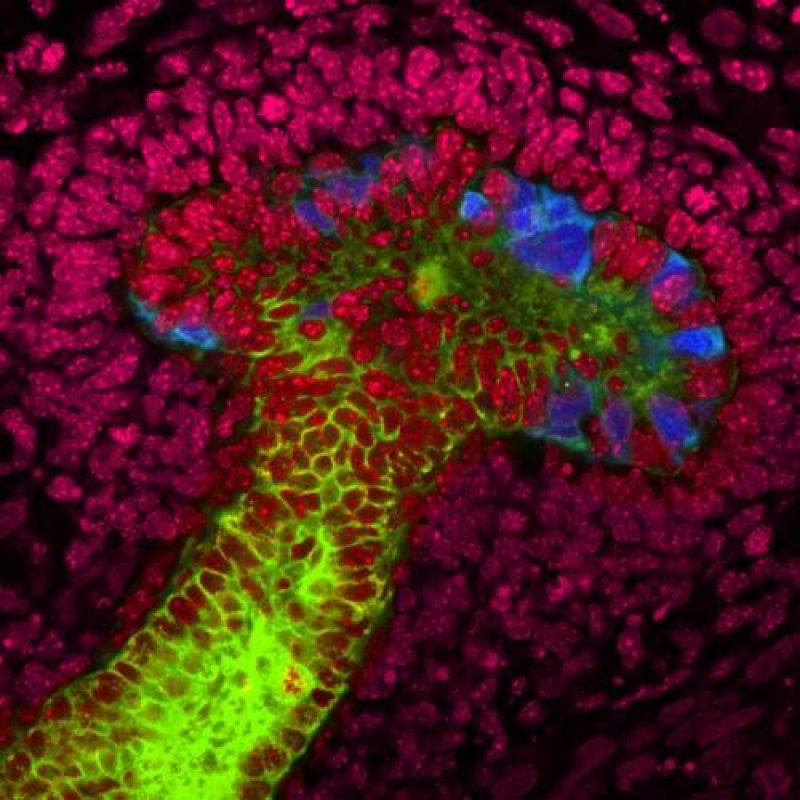For the first time, scientists have grown functional kidney cells from human stem cells. The breakthrough may open doors for scientists researching kidney disease treatments.
A team of researchers led by scientists at the Salk Institute for Biological Studies used pluripotent stem cells—those that can develop into many forms of tissues—and were able to “coax” them to become “three dimensional cellular structures similar to those found in our kidneys.” The researchers demonstrated this with both embryonic stem cells and induced pluripotent stem cells, human cells from the skin that have been “reprogrammed” into their pluripotent state.
The research, which was published in Nature Cell Biology, may be a a huge breakthrough in finding treatments for damaged kidneys, which “rarely recover function once they are damaged by disease.” Once a kidney is failing, a patient must either get a transplant or live on dialysis. More than 20,000 people a year receive a kidney transplant, at an average cost around $262,900 each. And even with a transplant there can be problems, such as organ rejection.
Scientists have explored other innovative strategies of kidney repair besides stem cell research, specifically 3D printing technology. Scientists at the Wake Forest Institute for Regenerative Medicine were able to print a mold of a kidney using “biocompatible material combined with cells.”
Though 3D printing technology holds promise, currently no technology exists to develop the inner structures of capillaries and veins that are vital to kidney function. The “simple and efficient” method of growing kidney cells from stem cells developed by the Salk Institute represents a “cornerstone of disease modeling and drug discovery studies.”
Read the full, original story here: Scientists generate “mini-kidney” structures from human stem cells
Additional Resources:































